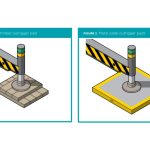
How to Move Large Outdoor Statues Safely and Efficiently
Whether you’re relocating a feature sculpture from one end of a garden or installing a new public monument, moving large outdoor statues is no simple task. These structures are often heavy, fragile, and hold significant financial or sentimental value. At Mighty Cranes, we’ve handled statue moves for councils, landscapers, and private collectors across Brisbane. Here’s a step-by-step guide to help you understand how large outdoor statues should be moved safely and efficiently.
1. Assess the Statue
Before you do anything, it’s important to thoroughly assess the statue. Understanding its dimensions, weight, and material will help determine the right equipment and rigging approach. Bronze statues, for example, are heavy but hollow, while stone or concrete statues may be solid and more brittle. Be sure to check for any signs of wear or cracks—especially in older pieces—which could affect structural integrity during the lift. An expert eye will ensure nothing is overlooked in the planning stage.
Start by evaluating the statue’s:
- Weight and dimensions – This will determine the type of crane and lifting gear required.
- Material – Stone, bronze, and concrete all behave differently under pressure.
- Condition – Older or weathered statues may have weak points or structural cracks.
A detailed assessment helps avoid damage during the lift and allows for better planning.
2. Plan the Lift Site
The success of any lift relies heavily on planning the site. You’ll need clear access for the crane and any support vehicles, which means checking gate widths, pathways, driveways, and nearby structures. Ground conditions also matter—a soft or sloped area may require additional stabilising measures. It’s also critical to look up: overhead powerlines or low tree branches can interfere with boom movement. A site inspection by your crane hire provider is essential to spot these challenges early. Lift planning is conducted by professionals, contact Mighty Cranes for a free lift plan and quote today.
You’ll need to consider:
- Access for cranes and support vehicles
- Ground conditions – Soft or uneven terrain can impact crane stability.
- Obstacles – Powerlines, trees, and nearby structures may restrict boom movement or access.
A professional crane operator can conduct a site inspection and provide a tailored lift plan to ensure everything runs smoothly.
3. Choose the Right Crane
Not every crane is suited to statue lifts, so choosing the right one is key. Franna cranes are useful for quick, straightforward lifts, particularly when the statue needs to be relocated within the same property and there is good access for the crane to move. For more rugged terrain, like parks or landscaped areas, a rough terrain crane offers better manoeuvrability. Larger or taller statues may require an all-terrain crane with longer reach and greater lifting capacity. At Mighty Cranes, we match the crane to the specific needs of your job to ensure safety and efficiency.
Not all cranes are created equal. For statue moves, mobile cranes such as:
- Franna cranes – Great for pick-and-carry jobs over short distances.
- Rough terrain cranes – Ideal for parks or gardens with tricky access.
- All-terrain cranes – Best for large or heavy statues and precise positioning.
At Mighty Cranes, we provide wet hire options with experienced operators and Dogmen to ensure safety and compliance.
4. Rig It Right
Rigging a statue incorrectly can lead to major damage—or worse, a failed lift. That’s why professional Dogmen assess the statue’s shape, weight distribution, and any potential stress points before selecting the right rigging gear. Special care is taken to avoid putting pressure on delicate or protruding areas, like outstretched limbs or thin features. The rigging method must keep the statue stable and upright throughout the lift, and in some cases, custom slings or protective padding may be used to prevent surface damage.
Using the correct lifting slings and attachments is key. The rigging must:
- Distribute weight evenly
- Avoid pressure on fragile or narrow points (like arms or protrusions)
- Be rated appropriately for the statue’s weight
Experienced Dogmen will select the safest method of slinging based on the statue’s design.
5. Time the Lift
Weather conditions can have a significant impact on the safety of a statue lift. High winds, heavy rain, or extreme temperatures can all increase the risk of instability. Even a light breeze can sway a suspended statue—especially tall or narrow pieces—making it difficult to control. Where possible, lifts should be scheduled during calm weather, with conditions monitored closely on the day. If wind speeds exceed safe limits, it’s best to postpone the lift until it’s safe to proceed.
6. Final Positioning
Once the statue is in the air, precise communication between the operator and Dogman ensures it’s placed gently and exactly where it’s needed. This phase often requires delicate, slow movement, especially if the statue is being fitted onto a base or pedestal. In some cases, dual-crane lifts may be used to control the orientation of awkwardly shaped or particularly large pieces. Experienced crane operators know how to manoeuvre with care, ensuring the statue is set down without damage and perfectly aligned.
Once lifted, precision placement is crucial. This often involves:
- Dual crane lifts (for taller or awkward statues)
- Slow, controlled movements
- Clear communication between the operator, Dogman, and spotters
Need to Move a Statue in Brisbane?
Mighty Cranes provides professional crane hire services for moving and placing statues across Brisbane, Logan, and Ipswich. Whether it’s a heritage sculpture, a public artwork, or a custom landscape feature, our team has the experience and equipment to lift and position it with precision.
Get in touch today for a free quote and lift plan tailored to your project.




